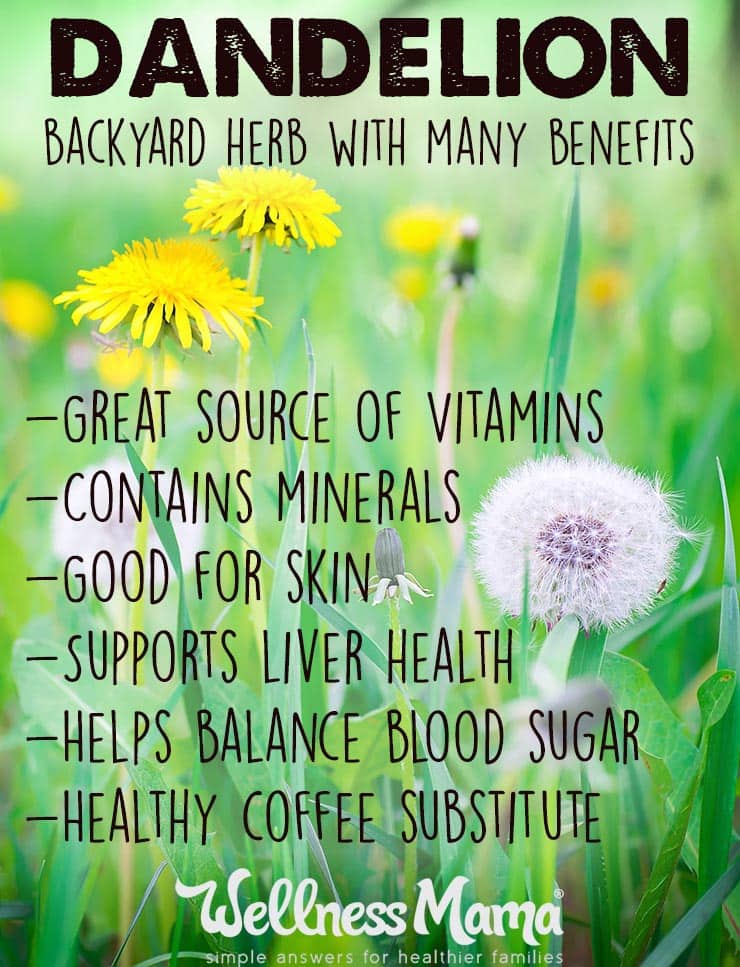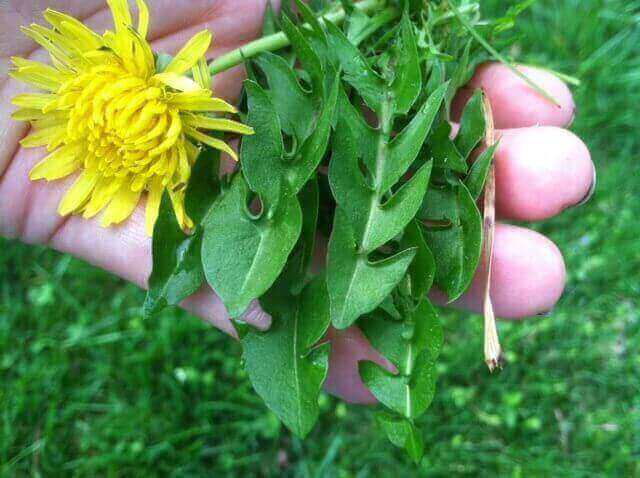Did you know you’ve probably pulled, stomped or sprayed a natural superfood that grows in your backyard? Dandelion is mostly known as a backyard weed, but it has amazing nutrient qualities and health promoting properties.
All the parts of the plant can be used in various ways though the roots and leaves are the most commonly used as herbs. Who knew that this plant with puffy flowers that grant childhood wishes could offer so much benefit?
Dandelion Root and Leaves
Dandelion is a source of a variety of nutrients and the leaves and root contain Vitamins (like A,C, K and B-vitamins) as well as minerals (including magnesium, zinc, potassium, iron, calcium and choline). The various parts of the plant have a long history of use as an herbal remedy, and every documented population in areas where it grows naturally has used it medicinally.
It also serves as an abundant natural food source, as all parts of the plant can be eaten. The root is often roasted and used in teas or consumed whole. The leaves make a great addition to salads or other dishes requiring greens and the flowers (while still yellow), can be eaten raw, cooked or even made into wine!
Traditional cultures have used dandelion to support digestive and hormone health and it was often consumed to support lactation or to help remedy issues like urinary tract infections.
Benefits of Dandelion
According to the How To Herb Book, this backyard superfood is beneficial in many ways, including:
Liver Support and Detoxification
Dandelion has been used for years by various cultures to support healthy liver function and natural detoxification in the body. Though it hasn’t been well studied, many people with hepatitis turn to it to help support the liver. The University of Maryland Medical Center notes that:
In the past, roots and leaves were used to treat liver problems. Native Americans also boiled dandelion in water and took it to treat kidney disease, swelling, skin problems, heartburn, and upset stomach. In traditional Chinese medicine (TCM), it has been used to treat stomach problems, appendicitis, and breast problems, such as inflammation or lack of milk flow. In Europe, dandelion was used in remedies for fever, boils, eye problems, diabetes, and diarrhea.
Female Health and Hormone Balance
Due to its high levels of various nutrients and potential ability to help support the body’s natural detoxification systems, dandelion is often used by those with hormone imbalance, urinary infection and recurrent mastitis. Though not well studied, there is an abundance of anecdotal evidence from women who have used it to help remedy recurring UTIs or other infections.
Clearer Skin
Due to its natural magnesium and zinc content and its potential ability to support detoxification, dandelion is also know as being good for the skin. It can be used topically in applications like tinctures and poultices and many people also take it in capsule or tea form to help support healthy skin.
Good Source of Nutrients
Dandelion is a great source of many important vitamins and minerals, as well as antioxidants and nutritive salts, which may help support blood health and increase iron absorption. I personally often add dried leaves to teas for a nutrient boost or use dandelion root in place of coffee.
Blood Sugar Balance
The University of Maryland Medical Center also reports that:
Preliminary animal studies suggest that dandelion may help normalize blood sugar levels and lower total cholesterol and triglycerides while raising HDL (good) cholesterol in diabetic mice. Researchers need to see if dandelion will work in people. A few animal studies also suggest that dandelion might help fight inflammation.
Uses of Dandelion Root and Leaves
Perhaps we wouldn’t be so quick to remove this “backyard weed” if we were more familiar with the myriad of uses it has. The entire dandelion plant can be used and if you have a safe (non-sprayed) source in your yard or community, you can consider harvesting it yourself.
Here are some of the ways to use dandelion:
Coffee Substitute
Dandelion root is tougher and more hardy than the leaf and is often used in decoctions and tinctures for this reason. The powder is often added in coffee substitutes (my favorite is Dandy Blend). The root is considered a natural diuretic and is sometimes used for this purpose.
Poultices
Dandelion root and leaf are often listed as the ingredients of teas and poultices for abscesses and sores, especially on the breast and in female health remedies as they can help support lactation and remedy urinary issues.
According to Mountain Rose Herbs:
Chopped dandelion root can be combined with myrrh to make a poultice for boils and abscesses, with honeysuckle flowers to make a tea to be drunk to treat boils and abscesses, with skullcap and/or chrysanthemum flowers to make a tea to be drunk to treat sore eyes, or with heal-all to treat hard phlegm in bronchitis. Can also be administered in capsule or extract form for convenience.
Dandelion Tea
The flower can be used to make tea and even to make some types of wine. The leaves and root can also be used in teas, though they have a stronger taste and are often combined with other synergistic herbs for flavor and increased nutrient absorption.
Salads and Greens
The leaves can be consumed fresh on a salad or in recipes as well as substituted for greens like kale and collards in recipes or cooking. The antioxidant rich leaves are the most diuretic part of the plant so while they can be consumed regularly, it is important to maintain hydration too.
Important Notes:
It is important to check with a doctor before taking this or any herb, especially in large amounts or if taking any other medicine or supplement or if pregnant or nursing. Though it is generally considered safe, those allergic to ragweed, chrysanthemums, marigold, chamomile, yarrow, daisies, or iodine may not be able to consume it.
Anyone who gathers dandelion from wild sources (like the backyard) should make sure that the area has not been sprayed with pesticides or herbicides and that it does not come from an area where pets may have eliminated.

Ever used dandelion? How did you use it? Share below!


Leave a Reply